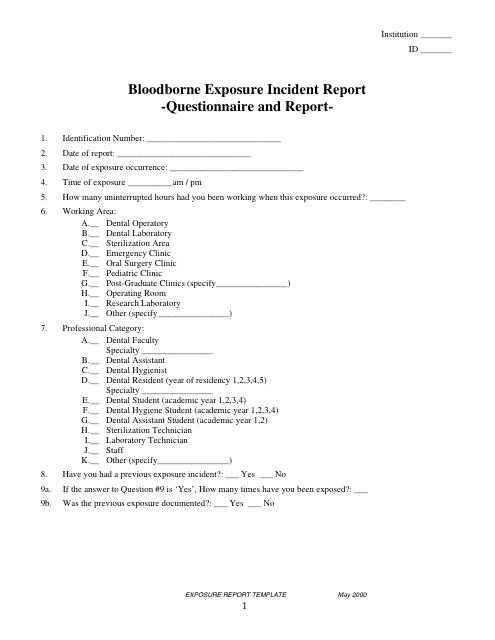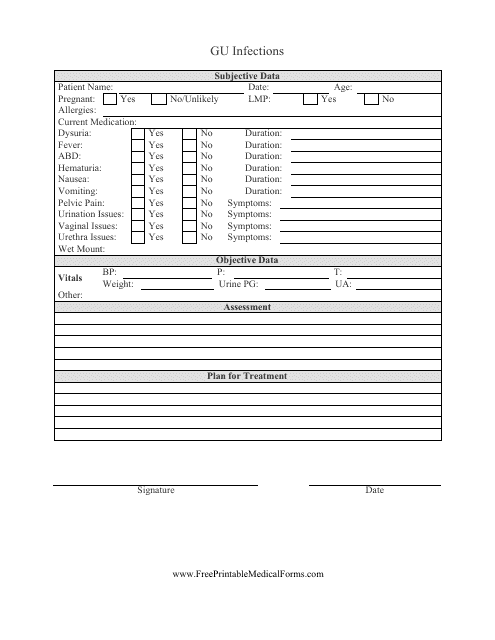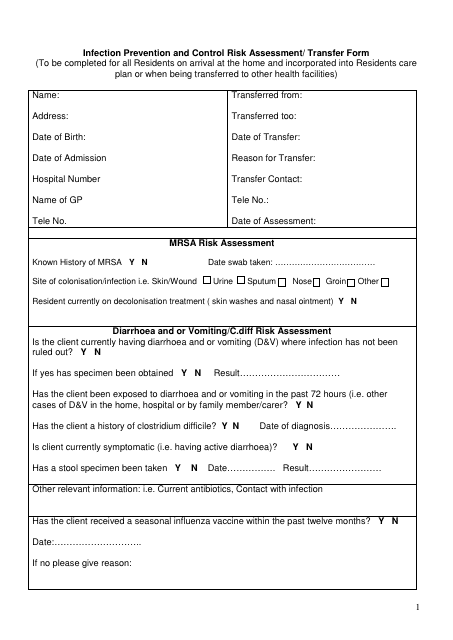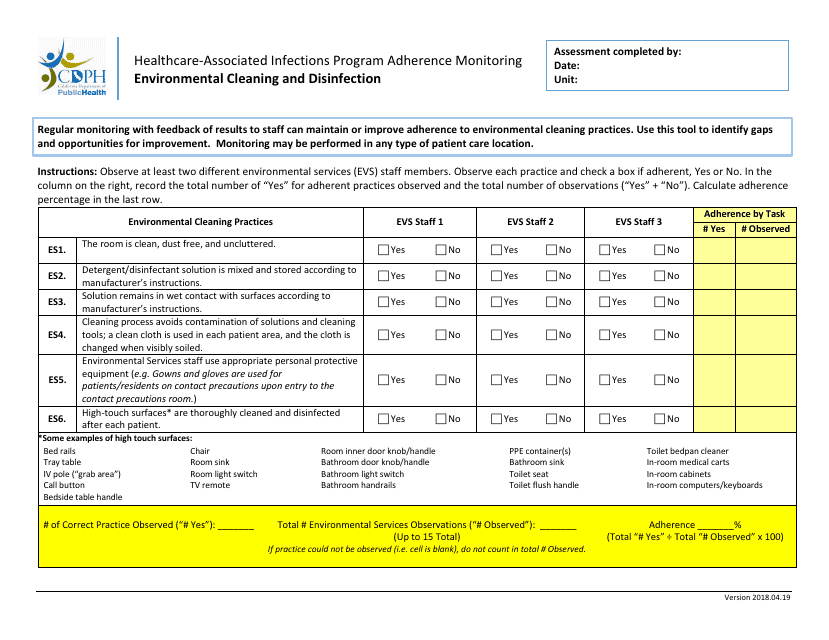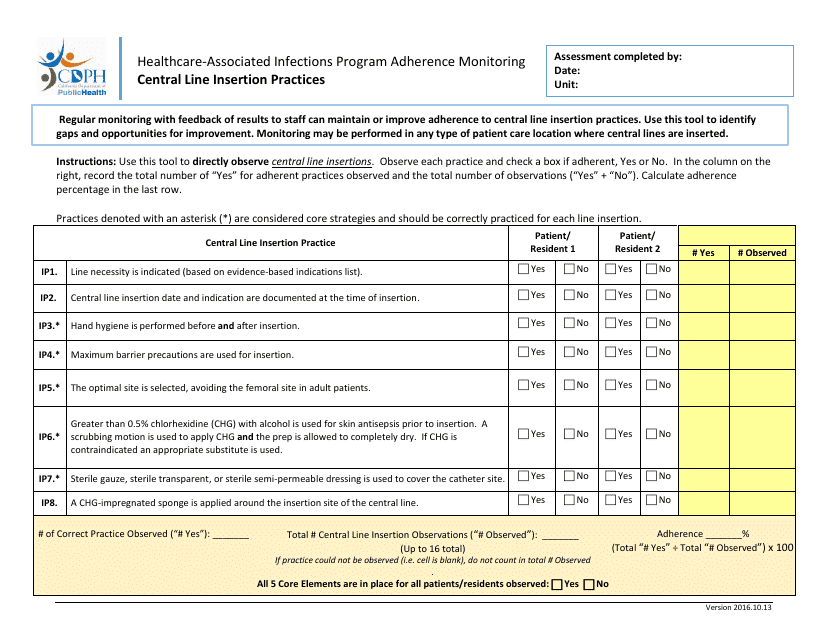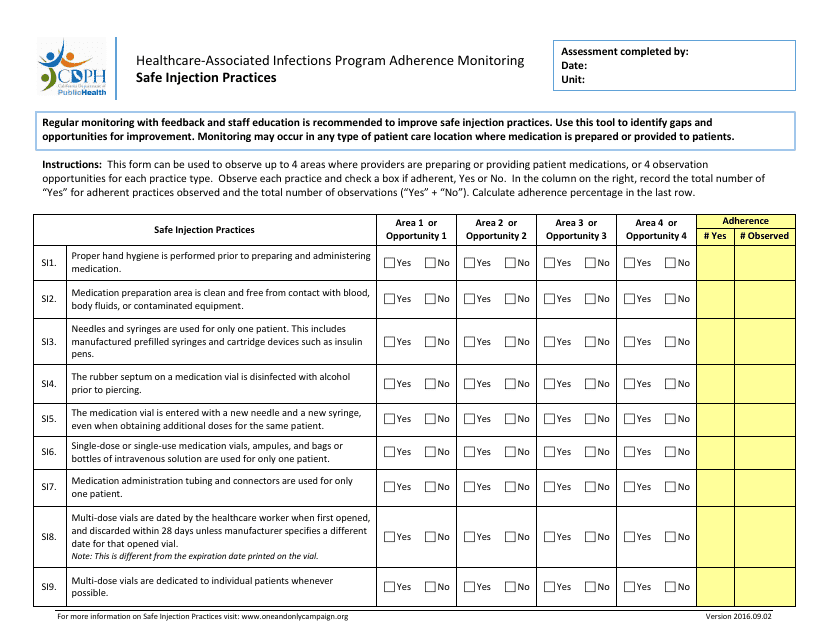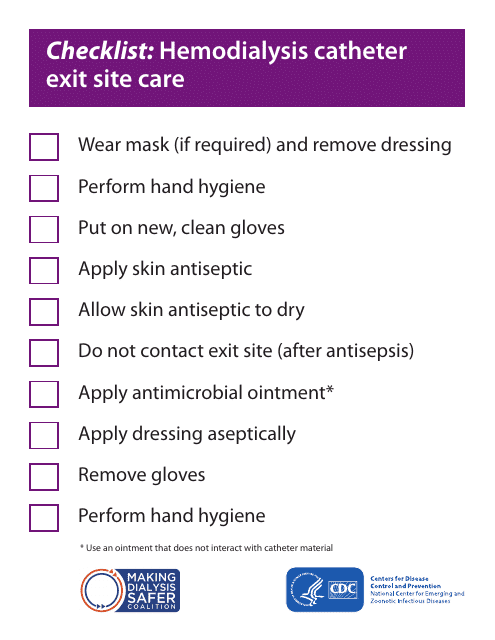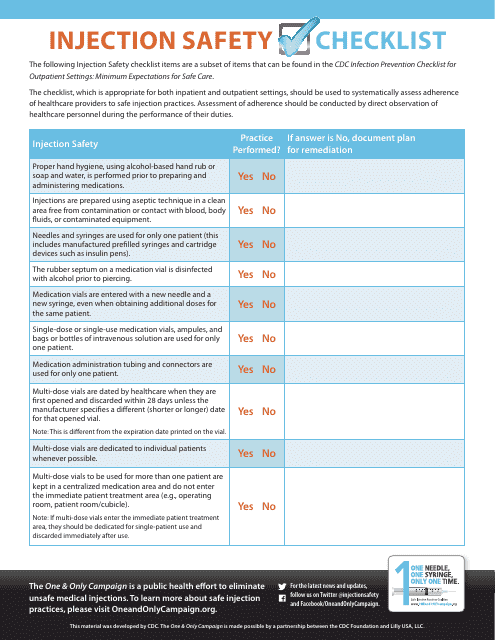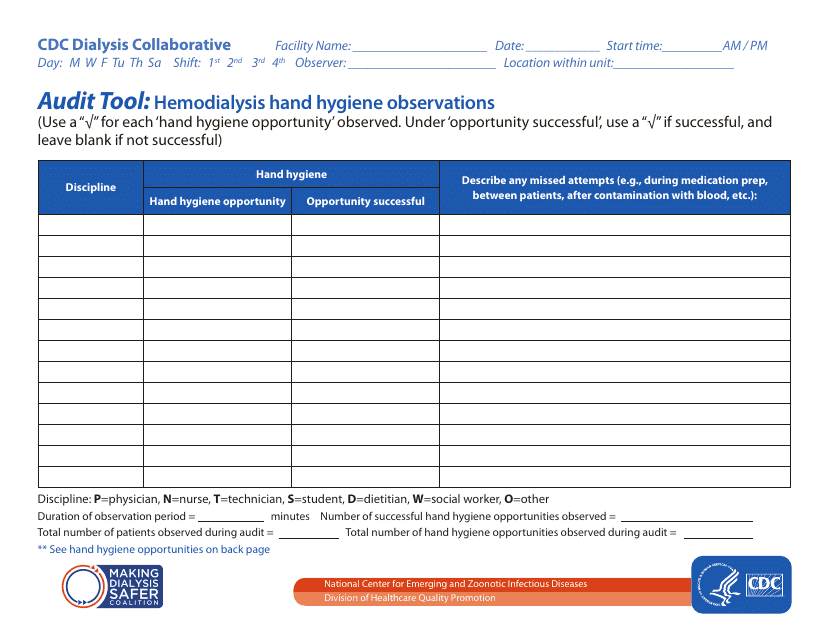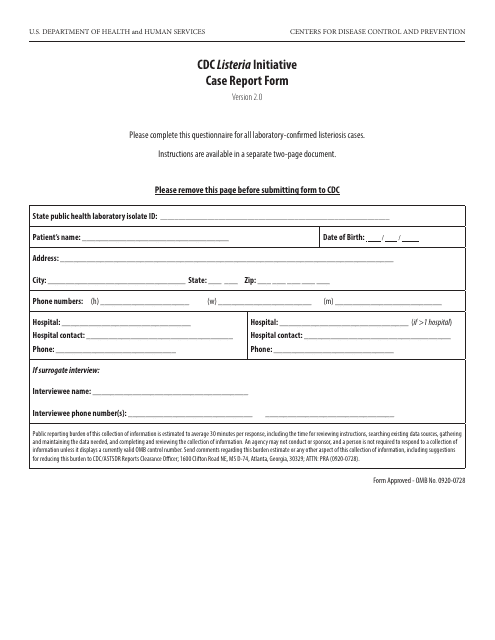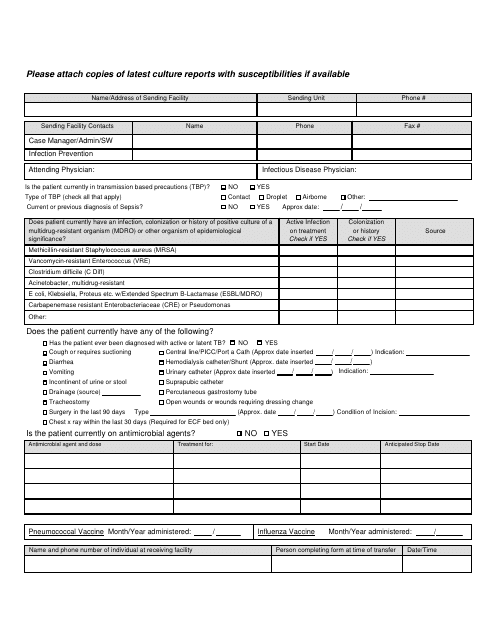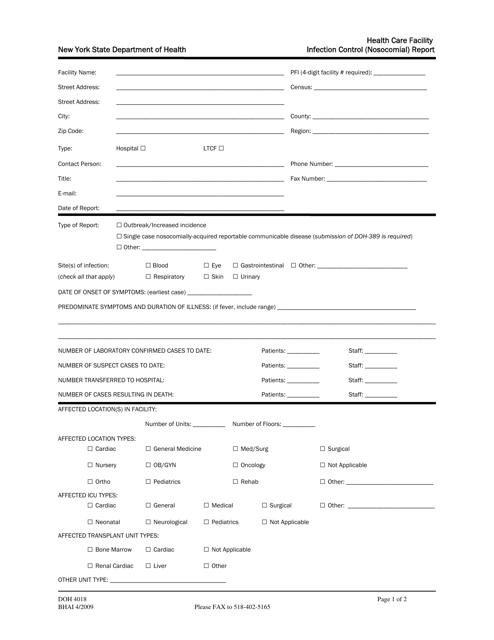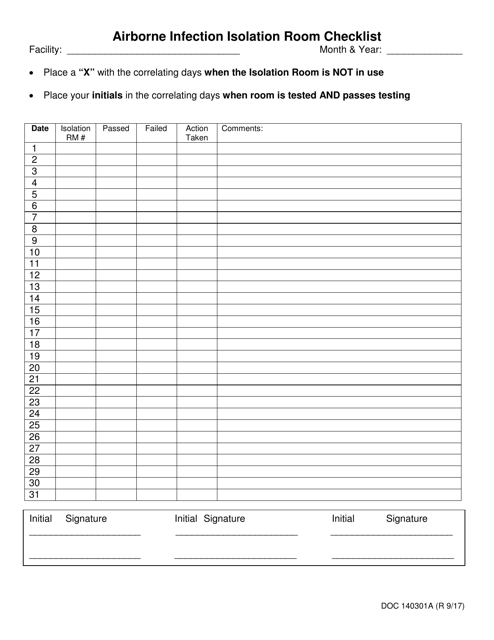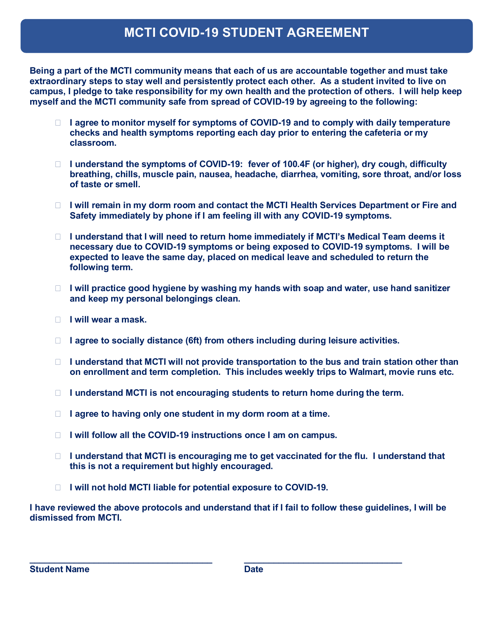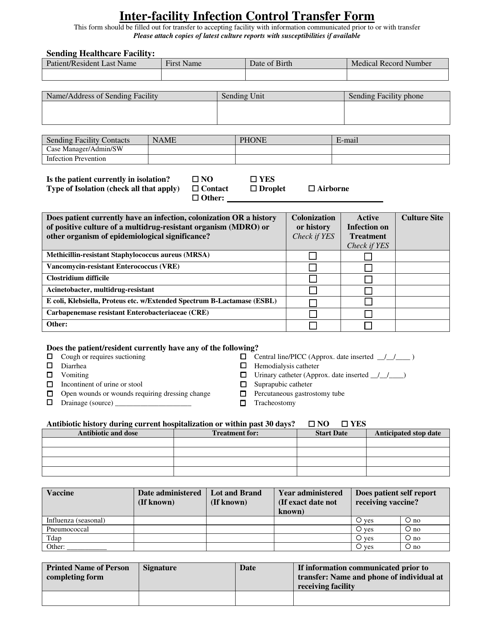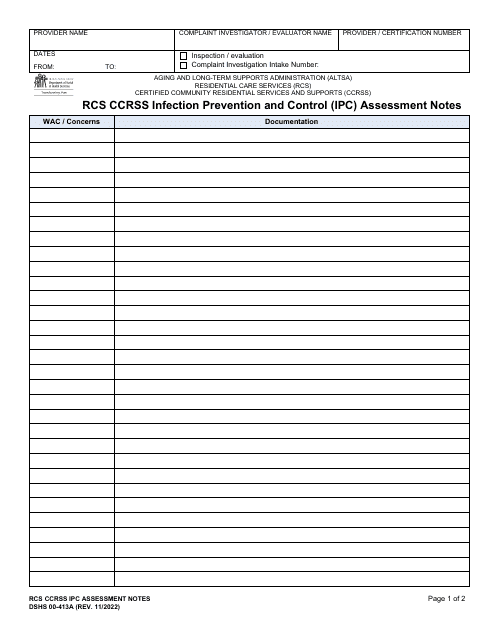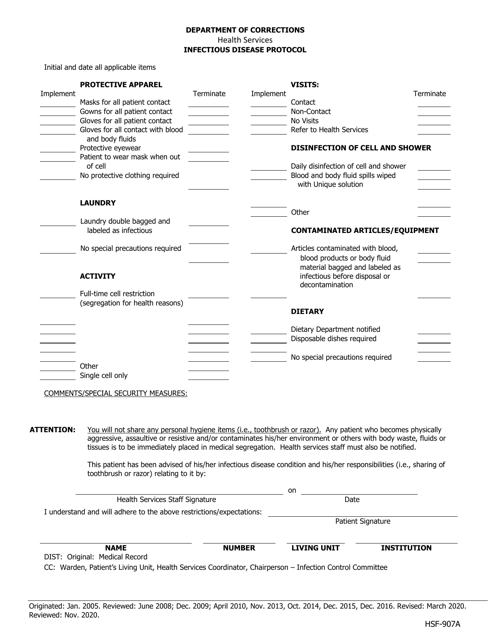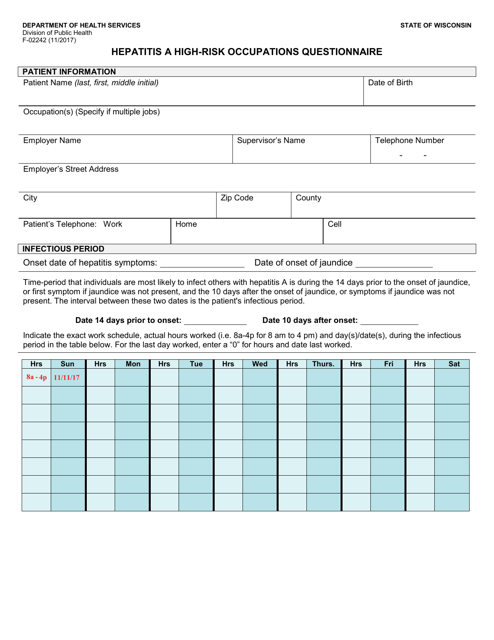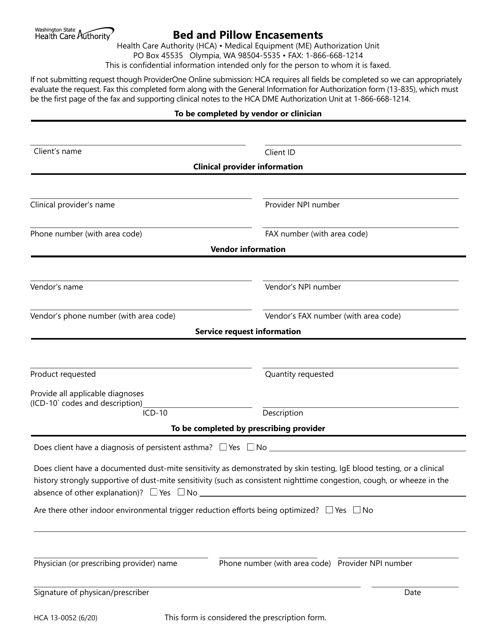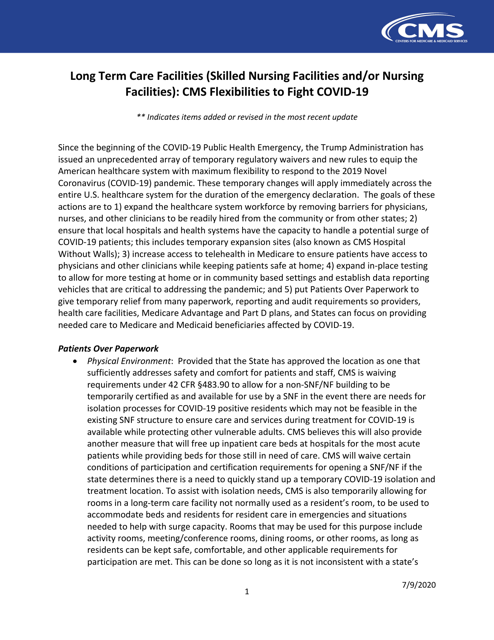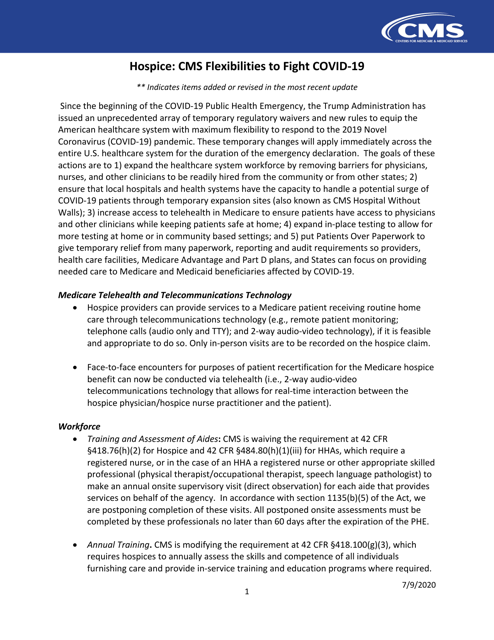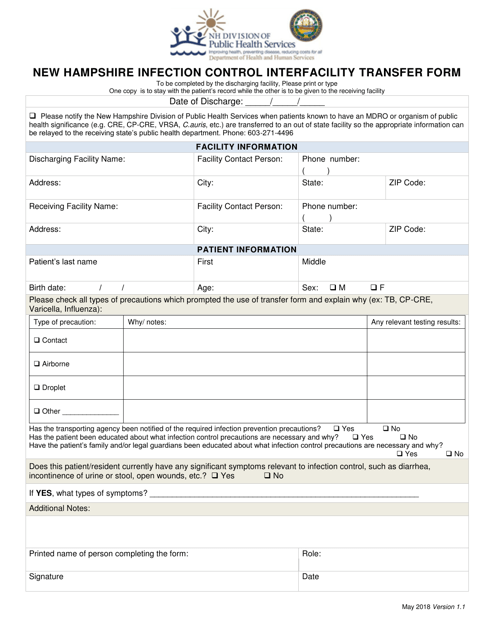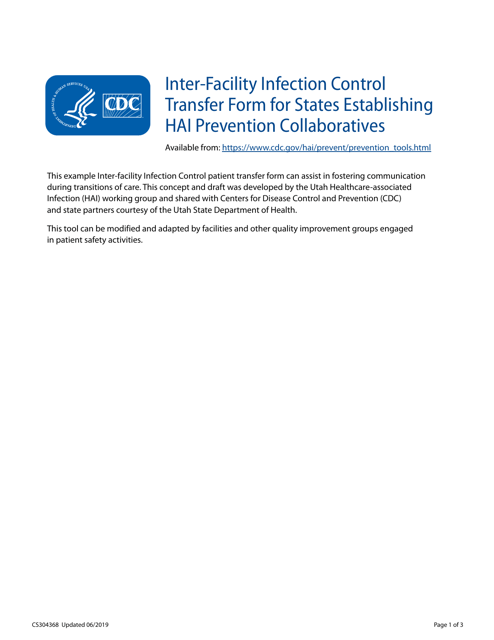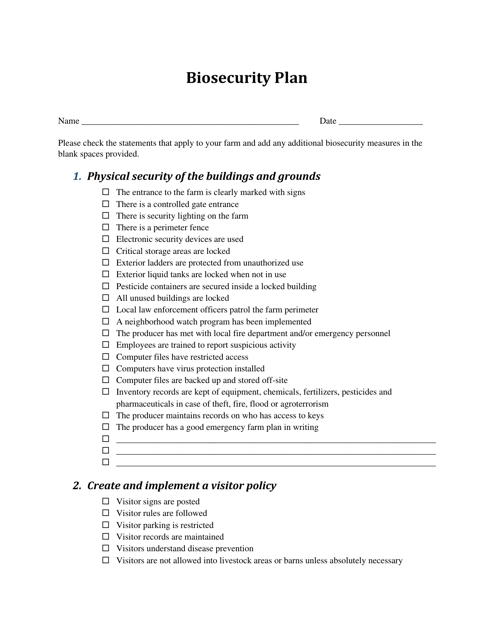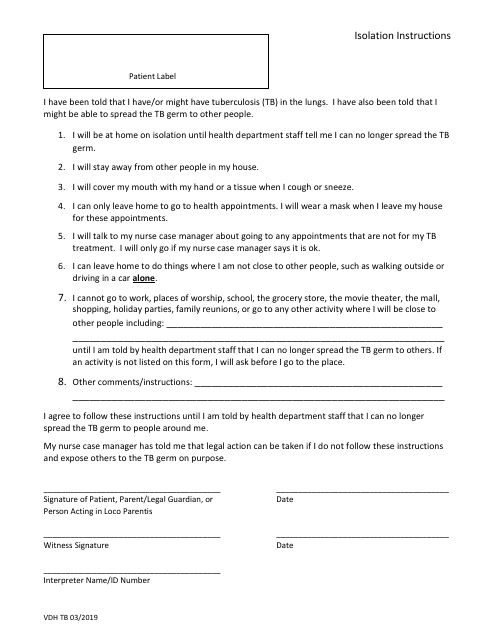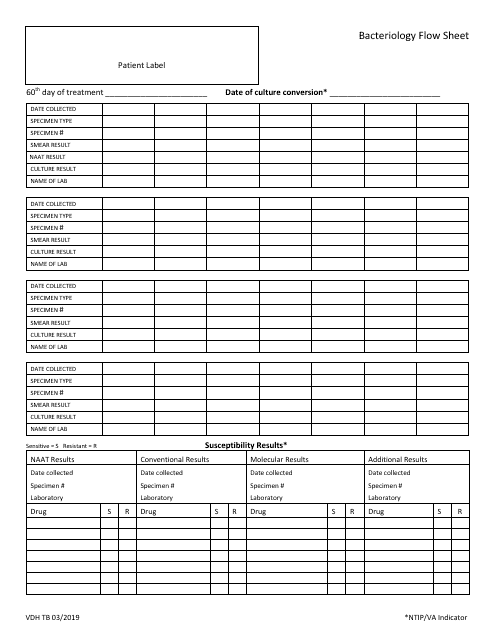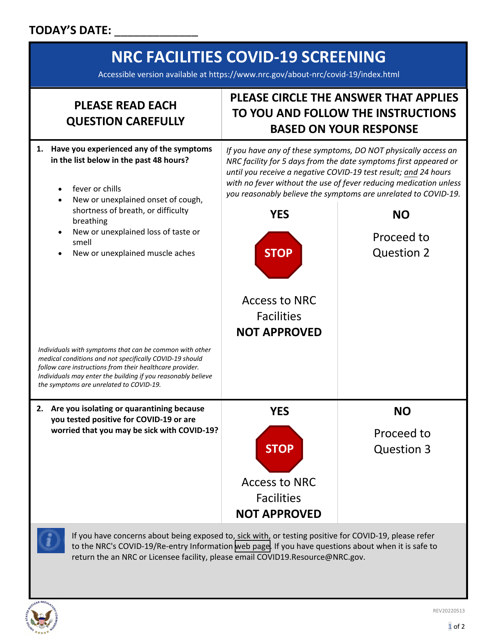Infection Control Templates
Infection Control Resources: Keeping Your Environment Safe and Healthy
Maintaining a clean and safe environment is crucial for preventing the spread of infections and ensuring the well-being of both staff and patients. Our collection of infection control resources provides comprehensive guidance and tools to help healthcare facilities, schools, and other institutions implement effective infection prevention measures.
Whether you're a healthcare professional, a school administrator, or an employer, our infection control resources will equip you with the knowledge and resources needed to minimize the risk of infections in your facility. Our collection includes best practices, guidelines, and forms from various states, such as the Central Line Insertion Practices in California and the Public Health Interim Guidance for Pre-k-12 Schools and Day Care Programs in Illinois.
Our infection control forms are designed to streamline the reporting and tracking of infections within your facility. From the Form DOH4018 Health Care Facility Infection Control (Nosocomial) Report in New York to the Form F-02242 Hepatitis A High-Risk Occupations Questionnaire in Wisconsin, you'll find a wide range of templates to assist you in efficiently documenting and addressing infection-related incidents.
In addition to forms, we also offer practical tools like the Face Mask Template - Large, which can be utilized by individuals and organizations to create their own face masks. This resource is especially relevant in the context of the COVID-19 pandemic, where wearing masks has become an essential part of infection control protocols.
Count on our reliable infection control resources to empower you with the information you need to uphold the highest standards of cleanliness and hygiene. Explore our diverse collection of best practices, guidelines, and forms to effectively implement infection prevention measures in your facility and protect the health and well-being of everyone involved.
Documents:
53
This form is used for reporting incidents involving potential exposure to bloodborne diseases, such as HIV and hepatitis, in order to ensure proper follow-up and prevent the spread of infection.
This form is used for assessing the risk of infection control in healthcare settings. It helps identify potential risks and implement measures to prevent the spread of infections.
This Form is used for assessing and transferring the risks related to infection prevention and control. It helps to identify and manage potential risks in healthcare settings to prevent the spread of infections.
This Form is used for assessing and managing infection risks for staff members.
This document provides guidelines and information on environmental cleaning and disinfection practices in California to maintain a safe and healthy environment.
This document provides guidelines and best practices for the insertion of central lines in the state of California. It covers the proper techniques and procedures for healthcare professionals to safely insert and manage central venous catheters.
This tool is used in California to monitor the adherence of environmental cleaning and disinfection procedures in the perioperative area. It helps ensure that proper cleaning and disinfection practices are followed to maintain a clean and safe environment for surgical procedures.
This Form is used for monitoring adherence to injection safety practices in the state of California.
This document provides a checklist for the routine disinfection of a dialysis station. It includes step-by-step instructions for cleaning and sanitizing the equipment and surfaces to ensure a safe and sterile environment for dialysis patients.
This document provides a checklist for the proper care of the exit site of a hemodialysis catheter. It outlines the step-by-step process to ensure cleanliness and prevent infection.
This form is used for ensuring the safe and proper administration of injections by healthcare providers.
This tool is used for conducting audits of hand hygiene practices in the context of hemodialysis procedures. It helps ensure that proper hand hygiene protocols are being followed to prevent the spread of infections.
This form is used for reporting cases of Listeria infection as part of the CDC Listeria Initiative.
This document is used for reporting and monitoring infection control transfers between healthcare facilities in Nevada.
This Form is used for reporting Carbapenem-Resistant Enterobacteriaceae (Cre) cases in New Mexico.
This form is used for attesting completion of infection control training in New York.
This document is a request for exemption from mandatory infection control training in New York based on equivalent training.
This form is used for reporting and monitoring nosocomial infections in health care facilities in New York.
This Form is used for conducting a checklist to ensure that airborne infection isolation rooms in Oklahoma meet the necessary requirements and standards.
This document is a student agreement specific to Michigan colleges/universities related to COVID-19 protocols and safety measures.
This form is used for documenting the transfer of patients between healthcare facilities in North Dakota and recording any infection control measures taken during the transfer.
This document provides important answers to questions about how to prevent needlestick injuries, covering topics such as best practices, safety measures, and precautionary measures to reduce the risk of needlestick injuries.
This document is for monitoring adherence to source control and respiratory hygiene in healthcare settings in California to prevent healthcare-associated infections.
This document outlines the protocol for managing infectious diseases in the state of Iowa. It provides guidelines and procedures to help prevent the spread of diseases and protect public health.
This document provides guidance for schools and day care programs in Illinois on how to address and prevent the spread of COVID-19. It includes recommendations for mitigation measures, cleaning and disinfection, testing and contact tracing, and other important considerations.
This form is used for high-risk occupations in Wisconsin to gather information about hepatitis A exposure.
This form is used for requesting bed and pillow encasements in Washington.
This document highlights the flexibilities provided by CMS (Centers for Medicare & Medicaid Services) to long-term care facilities, such as skilled nursing facilities and nursing facilities, in their fight against COVID-19. It includes various measures and guidelines to help these facilities manage and mitigate the impact of the pandemic.
This document provides information about the flexibilities granted by the Centers for Medicare & Medicaid Services (CMS) to home health agencies in response to the COVID-19 pandemic. It outlines the measures that home health agencies can take to combat the spread of the virus and ensure the safety of their staff and patients.
This document provides information about the flexibilities offered by the Centers for Medicare and Medicaid Services (CMS) to hospice facilities in response to the Covid-19 pandemic. It outlines the measures implemented to support hospice care during this challenging time.
This Form is used for facilitating the safe transfer of patients between healthcare facilities within the state of New Hampshire to prevent the spread of infections.
This form is used for transferring control of infection between different healthcare facilities.
This document outlines a Biosecurity Plan for the state of Indiana. It includes strategies and protocols to prevent the spread of diseases or pests that could harm plants, animals, or humans.
This document is a flow sheet used for tracking and recording bacteriology-related information in the state of Virginia. It helps in the management and analysis of bacteria-related data.

